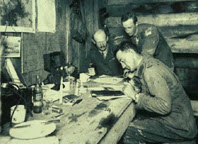 |
| ClickSoftware's Israel Beniaminy |
This is Part 2 in this interview with
ClickSoftware's VP of Product Strategy, Israel Beniaminy. Also read
Part 1,
Part 3, and
Part 4.
Kevin: What is different today, than when you started with enterprise mobility?
Israel: Just about everything. I'll mention two major differences: First, most or all barriers have disappeared. When I started, mobile technology was expensive, complex and unreliable, and even when you could hide the complexity, justify the costs and work around the reliability issues, it was just too new and too rarely deployed to be considered by anybody except for the brave early adopters. None of these barriers exist today. Second, enterprise mobility used to rely on mobile technology that was developed specifically for business uses – consumers were unlikely to see any benefits worth the high costs. Today, enterprise mobility is carried on a tsunami of consumer mobile technology. This not only made the deployment much cheaper, it also made many professional workers ready to accept – and eagerly anticipate – mobile deployment, as long as software vendors such as my employer were ready to deliver the level of usability, friendliness and the "I can’t define it but I know it when I see it" sense of fun we expect from consumer mobility.
Kevin: What industries do you see adopting mobility today?
Israel: What industries don’t? Field workers may seem like the immediate suspects, since they are indeed mobile in the strict meaning of that word. Yet, even workers who spend their whole workday within the same four walls have a lot to benefit from mobility. The health care and hospitality industries are just two examples of such industries which have discovered tremendous value in mobilizing their business processes.
Kevin: What business processes do you see companies mobilizing?
Israel: Some processes are mobilized in just about any industry: Work management (tasks and shifts); time reporting; expense accounts; and various approval processes (e.g. vacation approval). Other processes are industry specific, such as field service management in industries such as IT, telecommunications, consumer equipment, etc.; claims adjustment in insurance; quotes and billing in sales; inventory tracking; inspection and many more.
Kevin: What are some of the most surprising trends you saw in mobility in 2010?
Israel: The iPad surprised me twice: Once when it became an instant success in consumer mobile devices, and again when it was so quickly adopted by enterprise workers. A related trend that I found surprising is the growing number of organizations that allow workers to use their personal mobile devices in the enterprise work processes. This trend overcame both the reluctance of some IT departments to control the device choice in order to deliver adequate support, security and functionality; and the technological challenge of developing process specific applications that work well on many different devices. By the way, that technological challenge has too often been "solved" by developing weak and limited applications. I believe that with standards such as HTML5, we can really meet the challenge without compromising on functionality, robustness and user experience.
Kevin: What are some of the biggest challenges you see in mobility today?
Israel: I'll refer to business mobility – the use of mobile technology in improving existing business processes and enabling totally new business processes. In business mobility, I believe one major challenge is in understanding that mobilizing an application or a business process almost always requires a complete rethinking. If you just take the same screens and actions and make them available on a mobile device, you're probably doing it wrong. There are several reasons for that. I'll mention three: focus, context, and specialization.
Focus: Because a mobile worker is usually focusing on the task at hand and not on the mobile device, unlike the office worker who focuses on the screen to get the job done.
Context: Because a mobile application needs to be sensitive to many cues – Is the user driving right now? Is the user alone or with a customer? Is the user near enough to the location (of service or inspection, for example) in order to collect information? What communication bandwidth is currently available, if any? Each of these should make the application behave differently.
Specialization: Often, an office user specializes in one kind of role and can deep-dive into one application for most of the work day. A mobile worker will need to interact with many applications during the work day. For example, while service engineers are on site, customers may ask them about billing, contracts, new products and so on. If they have the right mobile applications, they can answer immediately instead of referring the customer to make multiple phone calls. This both raises customer satisfaction and reduces call center load, but it can be challenging to design the mobile applications so that users can use them intuitively even if they don’t use some of these services often; and it is also challenging to make it all work together. When switching from the field service screens to the billing functionality, we must preserve the context. Otherwise, the service engineer will need to type in information again, such as the same customer name, which makes the system just about unusable.
Read
Part 3 of this interview.
Whitepapers of Note:
***************************************************
Kevin Benedict, Independent Mobile and M2M Industry Analyst, SAP Mentor Volunteer
Follow me on Twitter @krbenedict
Join the
SAP Enterprise Mobility Group on Linkedin
Read
The Mobility News Weekly
Read
The Mobile Retailing News Weekly
Read
The Field Mobility News Weekly
Read
The Mobile Money News Weekly
Read
The M2M News Monthly
Full Disclosure: I am an independent mobility analyst, consultant and blogger. I work with and have worked with many of the companies mentioned in my articles.


























